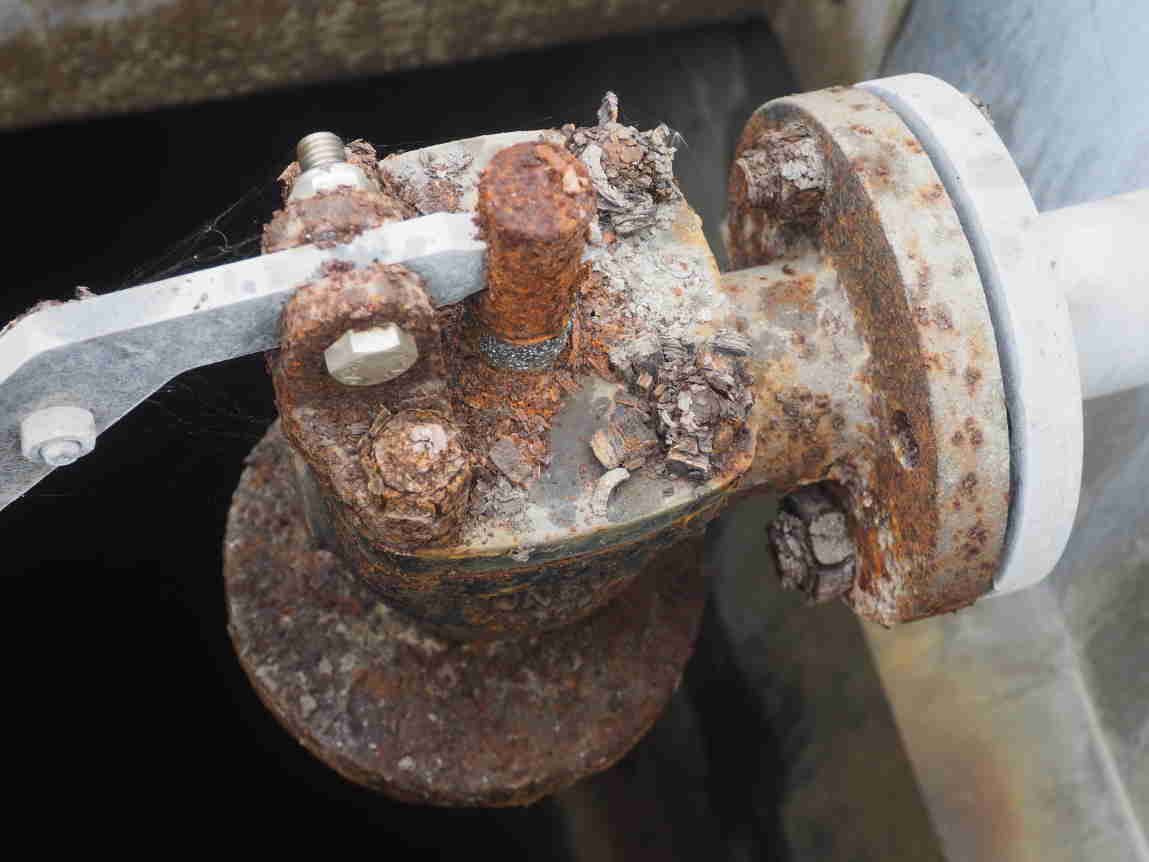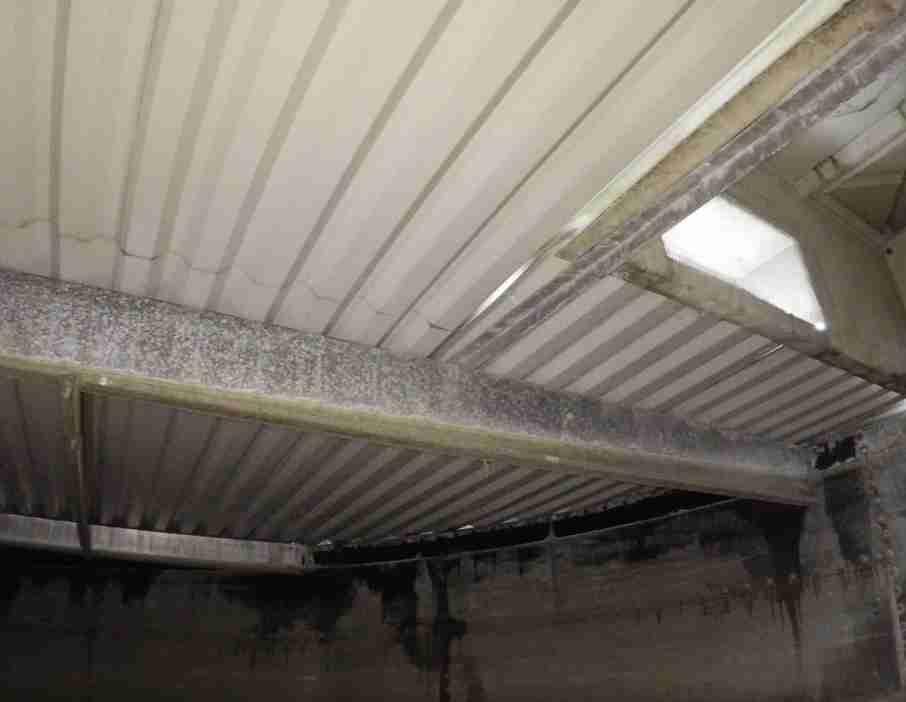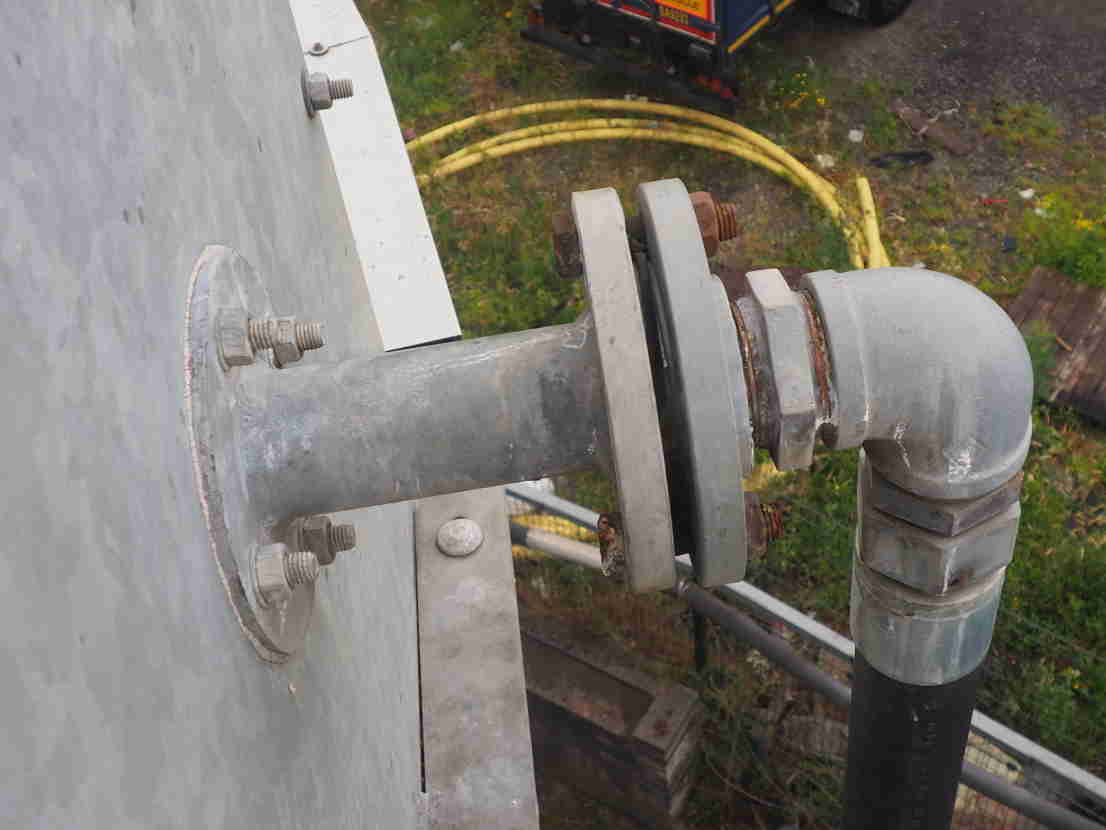

The client had a requirement to verify the integrity of a large above ground water tank they had on their property. The tank was primally used for storing water for fire suppression in the clients warehouse and so was an important piece of infrastructure. The client needed the tank inspected quickly in order to minimise downtime. They approached us to see what we could do for them.
Traditionally, the inspection of the water tank is done by a team of workers who use scaffolding to access the top of the tank. This method is time-consuming, expensive, and potentially dangerous. In addition, the scaffolding can cause damage to the tank's coating, which can lead to rust and other problems. Thus, the use of a confined space drone was proposed as an alternative method for inspecting the water tank.
The galvanised steel tank was large with a 500,000 litre capacity and was designed for holding water. It was located above ground next to a large warehouse. The site was also close to a busy motorway and airport. This made for some interesting challenges in the planning stage of this job.
The client required both the inside and outside of the tank to be inspected. They also requested a full conditional report on the tank with a clear damage classification system applied to all findings. A summary of the severe damages found and and imagery of all damages was also to be included.
Before setting foot on site we performed a full assessment of the air risk and ground risk associated with this
On first getting to the tank we mapped all the visible designed penetrations in the walls, roof and floor. This map would be used to check off the same penetrations on the inside of the tank to ensure all of them were inspected. The tank had a hinged man access hatch at the top and a bolted man access hatch at ground level. We decided in order to minimise downtime that the top hatch would be the best way to get the drone into the tank. We liaised with the client representative on site to see if there were any specific items they wanted to look at before commencing work.

Once the ingress point was established we were able to fly the drone into the tank without issue. We started from the top and worked our way down. We complete an inspection of the roof structure, then the internal walls and finally the floor. Once this was complete we gathered detailed shots of all penetrations to have on record. There was still about four centimetres of water in the tank so we had to be careful not to get too close. Thankfully with so little water we could easily see though it and make an assessment of the condition of the floor. We used the "wall lock" function of the drone to stay a specific distance from the wall and inspected the tank in ever defending circles until the entire tank was covered.
For the external part of the tank we used hte small but powerful DJI Mavic 2 Zoom. THe zoom lens on this drone allowed us to get good high-resolution detailed photography of the external aspects of the tank without having to fly the drone dangerously close to the asset. We also used a digital SLR camera to capture elements close to the ground.
A standard procedure for us is to capture all the internal and external sides of every tank penetration no matter what it's condition. This is because we believe it is important for your clients to be able to verify our work. If we were to only show the defect then the client would not be able to verify that what we have given them was the complete extent of defect on the tank.
All active components of the tank were also checked. This includes items like valves, level sensors and any internal electrical infrastructure. A good example of this is the main outflow point as seen int he image above. The tank penetration appears to be in good shape and the pipe is not blocked or corroded ina ny way. Good for many more years of service.
It is important to see beyond he obvious defects when inspecting an asset like a tank. In the image below you can see the water has been consistently rising above the level of tanks roof structural elements. This is because the automatic shut off for the fill valves was seized solid and the water only stopped when it poured out the overflow port at the top of th tank. This was leading to wasted water and also . the

The client wanted a complete tank inspection and reporting including the external surfaces and fittings. Here we found the main supply hose had only two bolts keeping the flanged joint together. It did not appear to be leaking but it was only a matter of time before it did. It was "low hanging fruit" to fix so we were sure to include it in the report.

In conclusion, the use of a confined space drone for the inspection of the above ground galvanized steel water tank proved to be an effective, efficient, and safe method. The drone was able to capture high-resolution images and videos of the tank's exterior and interior, which allowed the inspector to identify any visible damage, corrosion, or structural issues. The use of the drone also saved time and reduced the risk to workers, which is crucial in confined space inspections. The success of this case study demonstrates the potential of drones in confined space inspections, and their ability to improve safety, efficiency, and accuracy in various industries.









This is what the job looked like using drone technology.
What the job would have looked like if drones were not used.
Click the following links to find out more about our confined space drone services and our tank and silo inspection services. Alternatively you can contact us here.
Last Updated: 14 August 2023